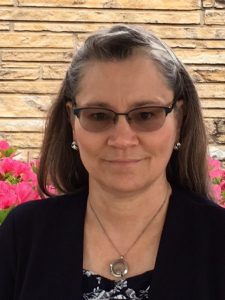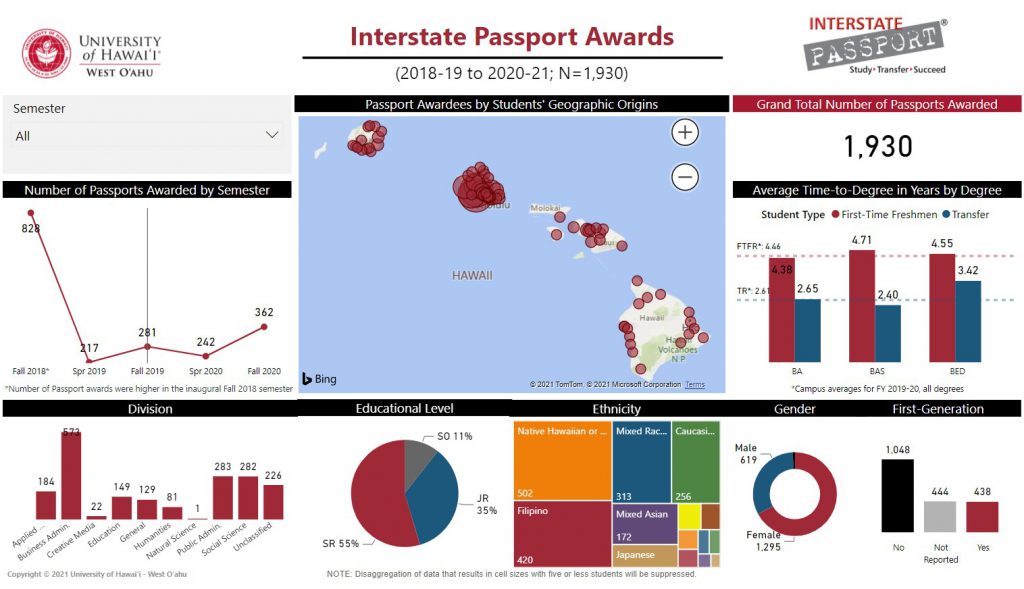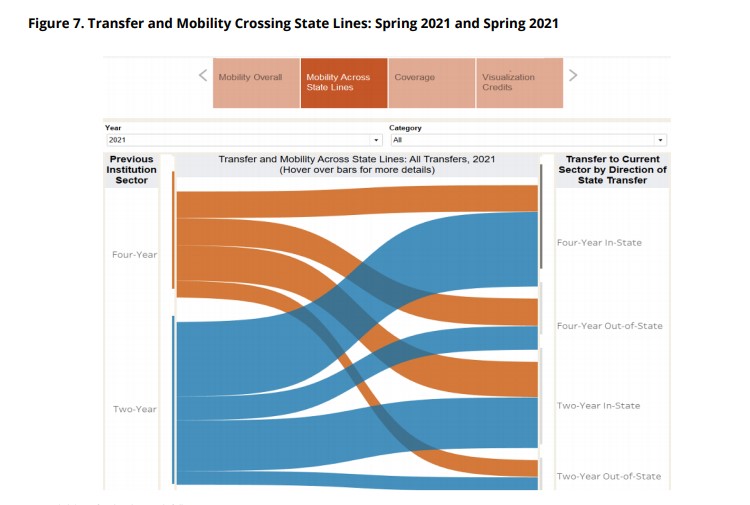UHWO Develops Interstate Passport Dashboard
The University of Hawaiʻi West Oʻahu’s institutional research office has created a useful and handy dashboard on Interstate Passport earners at the institution. The number of Passports awarded each semester is reported, and each cohort includes data on educational level, division, student geographic origin, ethnicity, first generation, and gender. The dashboard also reports average-time-to-degree in years by degree for first-time freshmen and transfer students.
Alan Rosenfeld, Associate Vice Chancellor for Academic Affairs, notes that the Passport recipients look very much like typical UHWO students in terms of ethnicity, gender, time to degree, Pell status, and first-generation status. Moving forward the institution will examine possible correlations between Passport awards and key metrics such as retention and persistence.
We encourage other Interstate Passport members to consider creating such a tool that provides useful information to institutional researchers and students, as well as other Network members. Contact John Stanley, Director of Institutional Research at UHWO, for more information: jstanley@hawaii.edu.
See the full dashboard here.
National Science Foundation Grant Awarded to Support Development of a STEM Passport
The Western Interstate Commission for Higher Education (WICHE) and New Mexico State University (NMSU), in collaboration with its branch community colleges, have been awarded a National Science Foundation grant that will be the first step toward development of a STEM Passport. Specifically, WICHE and NMSU will use the $300,000 grant over a one-year period to test the feasibility of using sets of lower-division student learning outcomes (SLOs) as the basis of block transfer into engineering programs. Instead of accepting only specific courses when a student transfers, as most institutions currently do, students would be able to transfer lower-division courses mapped to the SLOs as a block into engineering programs.
When the natural science Passport Learning Outcomes were developed several years ago, a number of faculty members expressed the need for a Passport in STEM subject areas. This project will be the first to examine utilizing learning outcomes in a STEM field as a basis for block transfer to a baccalaureate degree path.
Research indicates that nearly half of STEM bachelor’s degree recipients attend a community college at some point in their college career and are often required to repeat courses when they transfer. These challenges are amplified for students of color and students from low-income backgrounds who may have difficulty navigating transfer in the face of complex university admission requirements.
WICHE and NMSU’s capacity-building project will lay the foundation for work that will lead to four broader impacts: 1) Improved transfer efficiency in engineering disciplines; 2) improved curriculums that result in improved student retention; 3) improved participation and persistence among students of color and students from low-income backgrounds in STEM; and 4) increased numbers of engineering graduates to contribute to the economy. Though the reform of transfer practices is challenging, WICHE and NMSU will encourage this work by leveraging mounting pressure for engineering programs to change in response to numerous external forces. Foremost among these forces are the lack of a sufficient number of engineering graduates to fill an expanding job market and the need for STEM degree programs to embrace greater numbers of historically underrepresented students.
To accomplish this work, NMSU will identify the student learning outcomes that are critical for students to complete a four-year electrical engineering degree and map those SLOs to visually depict their prerequisite course relationships and preferable course sequencing. The resulting SLO map will inform identification of a lower-division SLO block to simplify curricula, potentially improving degree progress and persistence for all students, not just transfer students. WICHE will conduct a literature review to further identify factors that inhibit transfers within STEM and engineering disciplines, and also recruit leaders of national organizations and two-year and four-year institutions representing at least four states to analyze and refine NMSU’s proof of concept and assess the feasibility of scaling NMSU’s work to additional institutions.
The project will be led by several principal investigators: Sarah Leibrandt, director of Academic Leadership Initiatives at WICHE, David Smith, associate provost for Curriculum and Assessment at NMSU, and Laura Boucheron, associate professor of electrical and computer engineering at NMSU. According to Dr. Boucheron, this work will enhance student success by reducing time to degree, mitigating the effects of “bottleneck” courses and increasing student awareness of the interconnected nature of engineering topics.
Work on the NSF project began this spring. See press announcement here.
Call to Action: Help Fix Transfer for Students Nationwide
David Coleman, Chief Executive Officer of The College Board, has recently joined over 200 higher education leaders of institutions, national organizations, associations, and accrediting agencies in signing WICHE’s Call to Action to help fix transfer for students nationwide. Interstate Passport issued this call last July in the midst of the COVID pandemic, as higher education institutions were suffering stark economic and enrollment declines. We continue to receive endorsements and new signatories to the initiative as the ramifications of the pandemic to transfer students continue to become apparent. The advisory group that oversees this effort – Colleagues for Interstate Passport’s Future – is co-chaired by Samuel Gingerich, former provost and executive vice chancellor of the University of Alaska Anchorage, and Francisco Rodriguez, chancellor of the Los Angeles Community College District. The group meets quarterly to develop and implement strategies for expanding and solidifying Passport membership and to address the most pressing transfer issues facing colleges and universities. See the list of members of the advisory group and supporters of the Call to Action.
COVID-19: Transfer, Mobility and Progress, First Look Spring 2021
National Student Clearinghouse Research Center, April 21, 2021
This latest report from the National Student Clearinghouse is the third in a series that examines transfer patterns since the COVID-19 pandemic started last year. Data show that, two months into the spring term, transfer enrollment is down 7.9 percent, a decline 3.8 times larger than last spring, which declined 2.1 percent. Declines are especially among community colleges with drop of 15.2 percent.
Highlights:
- Students are less mobile along all transfer pathways, except for upward transfer where students grew three percent this spring over pre-pandemic levels. Both reverse and lateral transfer suffered steep enrollment declines of 21 percent and 9.2 percent, respectively.
- Transfer enrollment decline is more evident among White and Black students than their Hispanic and Asian peers. Hispanic transfer enrollment currently shows the strongest growth in the public four-year sector.
- With gender disparities growing across all age groups, transfer declines are larger for men, especially in upward transfer.
- Transfer declined for continuing students at twice the rate of returning students this spring (-10.2 percent and -4.9 percent, respectively, from a year ago). Continuing students transferring to community colleges decreased 20.8 percent, ten times the pre-pandemic rate of decline.
The National Student Clearinghouse Research Center launched this series on transfer immediately after colleges and universities shuttered campuses due to the pandemic last year. The data paint a clear picture of how different types of students and institutions have fared in the wake of school closures and job losses, and the resultant economic downturn.
Read the full report here.
Smoothing the Bumps in the Road: How to Better Articulate Articulation
This webinar presentation, part of the 2021-20 Alliance and Forum annual meeting virtual series, took place April 9, 2021. The session was moderated by Eric Leshinskie, Interim Provost at Maricopa Community Colleges and featured Aisha Lowe, Vice Chancellor of Educational Services, California Community Colleges; Michelle Marks, Chancellor, University of Colorado Denver; and Doug Shapiro, Executive Director, National Student Clearinghouse Research Center. The panelists focused on strategies that all institutions can implement to improve the transfer process between community colleges and four-year institutions.
Equity Gaps Persist. Doug Shapiro presented the data compiled by NSC over the past year on enrollment and transfer rates, which are reported in NSC’s latest report, COVID-19: Transfer, Mobility and Progress, First Look Spring 2021. The impacts of the COVID-19 pandemic defied expectations, with a slight decrease in enrollment among four-year institutions but a huge drop at community colleges. Shapiro noted that one of the most troubling effects of the pandemic is that it exposed and exacerbated the equity gaps that have always existed throughout our higher education system. The data reflect a view of transfer as students in distress. More disadvantaged students fell further behind. The existing gaps in equity and diversity in access to a bachelor’s degree, particularly for community college students, has grown wider during the pandemic.
Redesign higher education with transfer in mind. Michelle Marks of University of Colorado Denver (UCD) echoed this development: the impact of the pandemic on historically disadvantaged students is very real. Students have dropped out or stopped out primarily due to health or financial concerns – even before the pandemic college was becoming unaffordable for many students. Half of the students at UCD are transfers, aiming for that pathway to a bachelor’s degree. But the programs and efforts to streamline transfer have not been enough. As a member of the ACE task force on transfer, Marks shared the task force’s recommendations for improving transfer: prioritize credit for higher learning; improve transcript evaluation policies; utilize technology for efficiency and consistency; communicate clearly what credits will transfer and toward which degree pathway; assure quality advising; and partner with both sending and receiving institutions. Most importantly, embed transfer into the culture of higher education. Approach transfer from the perspective of the student. Create a system that values the range of experiences that students bring, from multiple institutions. Higher education institutions demonstrated adaptability when the pandemic struck. Marks urged institutions to use that innovation and strength in ways that will support all student educational journeys.
Innovation at the System Level. Aisha Lowe of the California Community Colleges (CCC) described the efforts underway to improve transfer in the vast CCC system of 2.1 million students attending 116 colleges. Rather than an initiative, guided pathways is the framework for aligning resources and programs to put students first. In place for four years, the framework operates under a set of vision goals and commitments. The system is preparing to shift to a student-centered funding formula, which will be dependent on the outcomes that an institution is achieving. In addition, the system has a number of transfer partners – state, regional and online – with transfer pathways articulated for each partner. Lowe reported that significant progress has been made in the number of students that earn AA degrees and transfer. But she noted that students still had to manage a complex system. More work is needed to streamline the hand-off to the system’s four-year partners.
Lowe also noted that students are not consulted enough on their experiences, goals and problems. Shapiro and Marks both agreed whole-heartedly. Their advice: listen to students. Reach out to them proactively with questions as well as information, advice and guidance. Lowe added that an ideological mind-shift is needed, particularly for state systems, one in which all institutions see all students as our students. The lines of demarcation between different institutions can be erased so that innovative policies can be implemented for all students.
The one-hour webinar is available on YouTube at https://www.youtube.com/watch?v=QaAPy9xAjss
SPOTLIGHT: Beverly Meinzer, University of Arkansas Community College at Batesville (UACCB)

Beverly Meinzer serves as the Institutional Liaison for the University of Arkansas Community College at Batesville, and as the Passport State Facilitator for the state of Arkansas. She teaches Chemistry I and II and is the only full-time instructor in Physical Sciences. Beverly also helps with student orientation and serves on various campus committees. She has been at the college for 18 years.
UACCB was the first institution outside of the Rocky Mountain region to join the Interstate Passport Network, and Beverly has been involved every step of the way. She worked with faculty to map the Passport Learning Outcomes to the college’s learning outcomes and to identify proficiency criteria that faculty members use in their lessons.
Batesville is the oldest existing city in the state of Arkansas with a population today of 10,000 people. The school enrolls approximately 1,000 students and since January 2021, classes have been held on campus following social distancing guidelines. The college has been fortunate in not having too many students drop out since the pandemic started last year.
Like many Passport institutions, UACCB wants to improve its communication with students about the Interstate Passport and what it means for students who achieve it. Beverly related that a student who received a letter indicating she had earned the Passport was surprised – she didn’t know anything about the Passport. But she was very pleased to know she had earned it and more confident as a result. Especially in a rural community likes Batesville, students want their college courses and credentials to prepare them for good jobs. Beverly has heard from the four-year institutions that UACCB students are, in fact, very prepared. Beverly will continue to work with the advising center to promote the Passport and stress that the knowledge and skills provided through the coursework are extremely valuable to students who transfer to a four-year institution or seek employment.
Bio: Beverly Meinzer earned a Bachelor of Science degree in Biology and Chemistry at Arkansas (Lyon) College, and a Master of Science in Chemistry at the University of Arkansas at Fayetteville. She is a chemistry faculty member at the University of Arkansas Community College at Batesville, Arkansas (UACCB). At UACCB, Beverly is also active on campus committees, having served on the Curriculum and Faculty Affairs Committees. Previously, she did adjunct work at Jackson State Community College in Jackson, TN and worked for the State of Tennessee Department of Health Laboratory.
Transfer in the News
The American Council on Education | March 22, 2021
Connecting the Dots: Scaling Remediation Reform to Promote Equitable Transfer Student Success
Alison Kadlec, Tackling Transfer, Inside Higher Ed | March 18, 2021
Using Short-Term Improvement Cycles to Accelerate Progress on Transfer
Alison Kadlec | Tackling Transfer, Inside Higher Ed | April 15, 2021
Credits, Partnerships and Advising: Metro State’s Trifecta of Transfer Success
Alison Kadlec |Tackling Transfer, Inside Higher Ed | February 18, 2021
Systems Can – and Must – Build Better Pathways to Prosperity
Laura Couturier and Alison Kadlec | Tackling Transfer, Inside Higher Ed | March 4, 2021
The Pandemic Pass/Fail Problem: How Colleges Can Help Students Transfer
Wesley Whistle and Elin Johnson | New America | March 17, 2021
How States and Systems Can Work Toward Making Transferring Smoother
Elin Johnson and Wesley Whistle | New America | February 10, 2021
After the Storm: The Jobs and Skills that Will Drive the Post-pandemic Recovery
Burning Glass Technologies | February 2021


